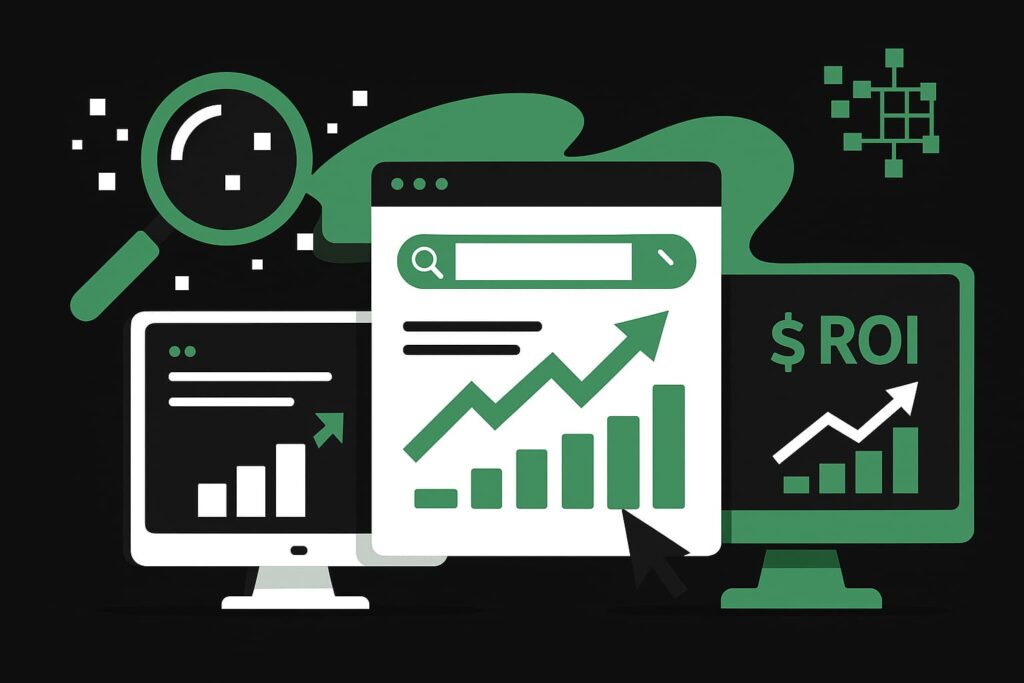Pixel trackingand SERP visibilityare two of the most overlooked yet powerful elements in modern SEO measurement.
While many marketers still rely on traditional metrics like keyword rankings and organic sessions, these numbers often fail to reflect what really matters like how SEO efforts translate into measurable business outcomes.
By combining pixel tracking, which reveals how users behave and convert after finding your site, with SERP visibility metrics that show how prominently your brand appears across Google results, you can uncover the true ROI of your SEO strategy.
Together, they connect visibility with action and turn data into proof of performance.
The Problem With Measuring SEO ROI the Old Way
Marketers have long relied on metrics like keyword rankings, organic sessions, and bounce rates to gauge SEO performance. But while those metrics indicate visibility, they don’t prove business value.
The truth is, SEO often plays a supporting role in conversions that happen days or weeks later, and traditional analytics rarely capture that full journey. For example, a user might find your brand organically, browse your content, then convert through a remarketing ad. Without deeper tracking, that conversion is incorrectly credited to paid channels.
In fact, 49% of marketers say organic search delivers the best ROI, yet most admit they can’t measure it accurately due to attribution gaps and missing conversion data.
What Is Pixel Tracking (and Why It Matters for SEO)
Pixel tracking involves placing a small snippet of code, or a “pixel”, on your website to monitor user interactions. These pixels collect data on actions such as page views, form submissions, and purchases, even across multiple sessions or devices.
While pixel tracking is standard practice in paid campaigns (like Meta Ads or Google Ads), it’s now becoming an essential part of SEO attribution. Why? Because it connects the dots between organic search and downstream conversions.
Here’s what SEO pixel tracking can reveal:
- How organic users interact with key landing pages
- What actions they take (signups, calls, downloads)
- How SEO touchpoints contribute to conversions later credited to other channels
When combined with analytics tools like GA4, pixels make it possible to see the real-world business impact of organic traffic. Not just who arrived from Google, but who actually engaged or bought.
Why SERP Visibility Is the Hidden ROI Metric
For years, reporting from an SEO agency Sacramentohas focused on keyword rankings. But ranking #3 for one keyword might be less valuable than appearing in multiple SERP features like featured snippets, People Also Ask boxes, or local map packs across dozens of searches.
This broader exposure is known as SERP visibility or your brand’s total presence across search results. Tools like Ahrefs, Semrush, or Google Search Console now measure it as a “visibility score” or “share of voice.”
When you consider that only 0.63% of Google users click on results from the second page, even small improvements in visibility can have huge ROI implications. More SERP presence means more clicks, more data, and more opportunities for pixel tracking to capture valuable user actions.
Bridging the Two: Pixel Data and SERP Visibility
According to HubSpot’s State of Marketing Report 2024, companies using advanced tracking and attribution report up to 30% higher accuracy in measuring ROI. That precision can transform how SEO budgets are justified and optimized.
Individually, pixel tracking and SERP visibility are powerful. Together, they give marketers a complete view of SEO performance, from search impression to final conversion.
Here’s how they connect:
- SERP visibility shows how often and where your brand appears.
- Pixel tracking shows what those visitors do after clicking through.
- Together, they provide a continuous feedback loop from visibility → engagement → conversion.
For instance, pairing visibility data from Ahrefs or GSC with pixel-based conversion tracking in GA4 or HubSpot helps you identify which keywords and pages actually lead to revenue.
How to Implement This Strategy
To start connecting visibility with conversions, follow these practical steps:
- Audit your SERP visibilityusing Ahrefs, Semrush, or GSC. Identify which pages dominate impressions but show weak engagement.
- Install tracking pixelssuch as Meta Pixel, Google Ads Tag, or LinkedIn Insight Tag on key landing pages.
- Connect your analytics and CRM tools(HubSpot, GA4, or Data Studio) to unify conversion data.
- Segment organic audiencesfor remarketing and funnel analysis.
- Measure multi-touch attribution, not just last-click conversions, to capture SEO’s full influence.
Within a few weeks, you’ll start seeing how organic impressions translate into real business outcomes, not just clicks.
Common Pitfalls to Avoid
Even with the right tools, measuring SEO ROI through pixel tracking and SERP visibility can be tricky. Small setup errors or data gaps can easily distort your insights. Here are some of the most common mistakes to watch out for:
- Not filtering internal or bot traffic– Skews engagement metrics and inflates conversion data.
- Double-counting conversions across channels– Leads to misleading ROI reports and false positives.
- Relying on last-click attribution only– Undervalues SEO’s contribution to multi-touch journeys.
- Failing to align pixels with key conversion points– Tracking the wrong events means incomplete ROI visibility.
- Neglecting cross-device tracking– Users may start on mobile and convert on desktop, causing attribution loss.
- Ignoring SERP feature performance– Overlooking clicks from featured snippets or map packs can hide true visibility gains.
- Not validating pixel firing– Misfiring pixels or outdated tags lead to broken or missing data.
- Using inconsistent UTM parameters– Makes it difficult to connect organic touchpoints with later conversions.
Conclusion
SEO has evolved beyond rankings and traffic reports. Today, pixel tracking and SERP visibility together provide the clearest, most reliable picture of ROI.
By combining behavioral data with visibility metrics, you can finally connect your SEO work to tangible business outcomes. This proves not just that people find your site, but that they convert because of it.
Ready to Measure Your SEO ROI the Right Way?
If you’re tired of guessing what’s really driving your organic results, it’s time to make your data work harder for you. Sierra Exclusive SEO and business consulting agency in Sacramentohelps brands connect every search impression and website click to real business outcomes through advanced pixel tracking, SERP visibility monitoring, and data-driven SEO strategies.
Our team combines creativity with analytics to uncover what truly moves the needle, so you can see, prove, and scale your ROI with confidence.
Let’s make your SEO measurable.
Frequently Asked Questions (FAQ)
1. What pixel height are Google AI Overviews in SERP?
Google AI Overviews typically occupy about 700–800 pixels in height on desktop results, depending on the query and layout. However, this can vary since AI-generated summaries are dynamically adjusted based on content length and device type.
2. How does Google SERP work?
The Google Search Engine Results Page (SERP) displays a mix of organic results, paid ads, and rich features (like AI overviews, snippets, and maps) ranked through Google’s algorithm. Rankings are determined by factors such as relevance, content quality, authority, and user intent.
3. How accurate are Google AI Overviews?
AI Overviews are generally accurate but not perfect. They summarize information from high-ranking web pages but may occasionally misinterpret or simplify complex topics. Google continues refining this feature to improve factual precision and citation transparency.
4. What is a pixel in Google Analytics?
In Google Analytics, a pixel is a small tracking code snippet that collects user behavior data such as visits, clicks, and conversions. It helps connect marketing actions to outcomes, enabling deeper analysis of how users interact with your site.
5. Is AI Overview better than ChatGPT?
Not exactly. AI Overviews focus on providing quick, sourced summaries within Google Search, while ChatGPT delivers conversational, contextual, and multi-turn responses. Both serve different purposes: Google’s AI aims for fast facts; ChatGPT excels in explanation and strategy.




